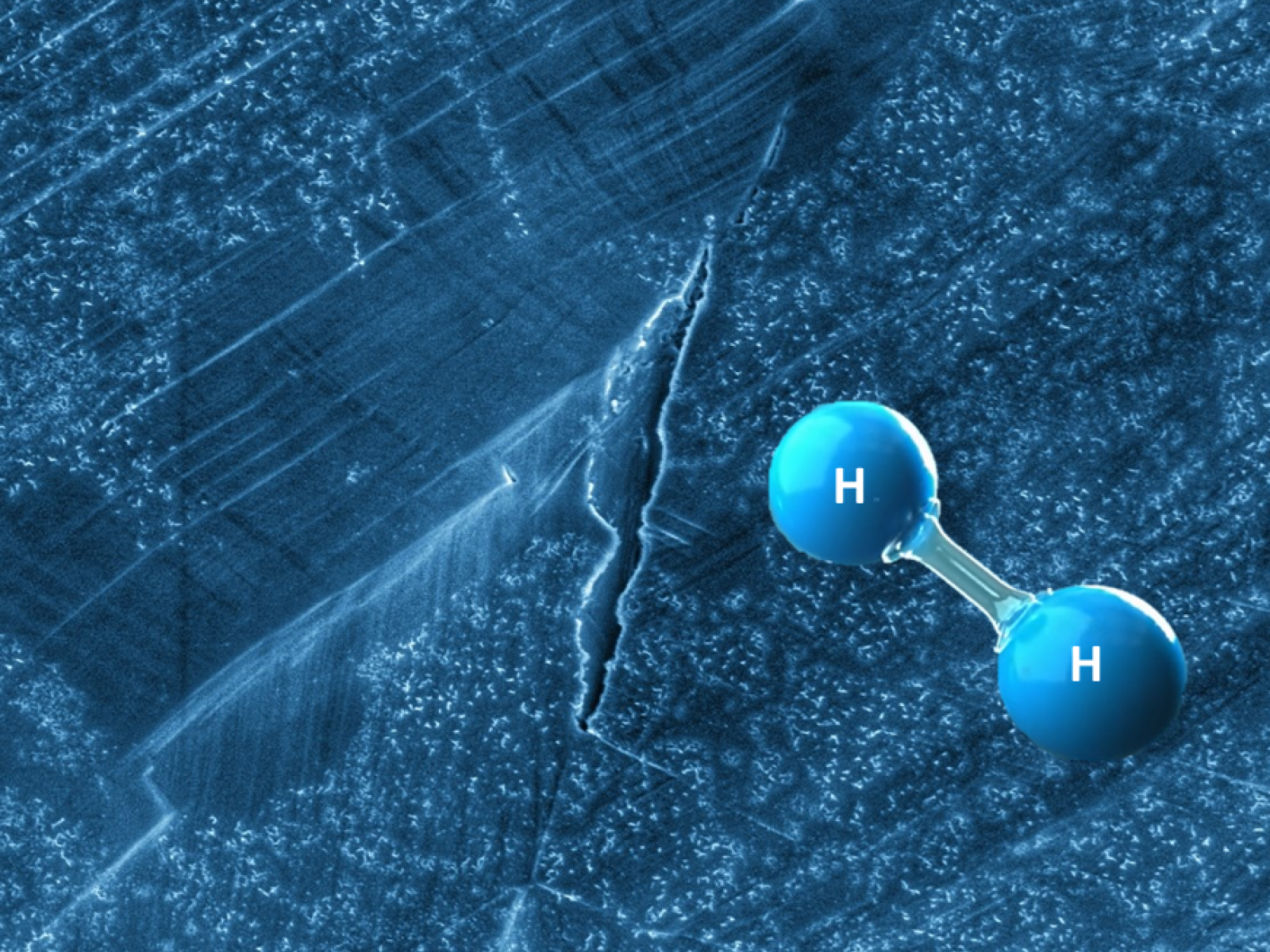Quantitatively Analyzing Nanoscale Hydrogen Distribution in Materials
Researchers demonstrated a path to quantitatively map hydrogen pick up in model steels

Quantitative data on hydrogen distribution in an iron alloy can help researchers develop a more accurate picture of hydrogen movement within materials and better understand hydrogen embrittlement mechanisms.
(Image by Arun Devaraj | Pacific Northwest National Laboratory)
The Science
Hydrogen embrittlement can affect the quality and lifetime of steel but has been challenging to quantitatively understand due to the difficulty of mapping hydrogen at nanoscale spatial resolution. New research compares hydrogen pick up in two materials: pure iron ferrite, and an austenitic model iron-based alloy with added chromium and nickel to study how hydrogen distributes at the nanoscale. Results showed that nanoscale regions in the austenite have high hydrogen concentrations relative to ferrite when both materials are exposed to identical electrochemical charging conditions. This localization was attributed to the high solubility and low diffusivity of hydrogen in austenite.
The Impact
Hydrogen is considered a promising green fuel for a future carbon-neutral economy. Its use will require pipelines to carry hydrogen and stable storage tanks, likely made of steel. Therefore, understanding hydrogen movement within steel is essential for developing and maintaining high-quality materials as substantial concentrations of hydrogen can make it easier for steel to crack from hydrogen embrittlement. However, the small size and mass of hydrogen atoms makes analyzing its nanoscale distribution within materials difficult. By combining multiple experimental techniques, researchers were able to demonstrate an approach to quantitatively mapping hydrogen distribution inside a model steel material. This baseline understanding can help future research quantifying hydrogen diffusion and localization at different sites, such as defects or interfaces, within steel.
Summary
Hydrogen diffusion behavior in steels is an important aspect affecting the long-term behavior of steels in applications where they are exposed to hydrogen. Having a robust and quantitative understanding of hydrogen distribution in materials is central to developing predictive models for hydrogen embrittlement and identifying relevant mitigation strategies. However, hydrogen’s low atomic mass makes quantitatively estimating hydrogen concentration within nanoscale regions of material microstructure extremely challenging. Previous efforts to quantify hydrogen pickup in different phases of steels, including ferrite and austenite, have been either qualitative or semi-quantitative. New research attempted to establish a baseline understanding of how to quantitatively analyze hydrogen pickup in austenite and ferrite through a combination of cyclic voltammetry and cryogenic-transfer atom probe tomography. The high solubility and low diffusivity of hydrogen in austenite versus ferrite likely leads to the higher hydrogen concentration in austenite. This work paves a path for quantitative analysis of hydrogen in materials at nanoscale spatial resolution. Specifically, this progress will enable future efforts to analyze the influence of applied stress and corrosive environments on hydrogen segregation behavior in steels. It can affect the development of materials for all aspects of the hydrogen economy, including the production, transportation, and storage of hydrogen.
PNNL Contact
Arun Devaraj, Pacific Northwest National Laboratory, arun.devaraj@pnnl.gov
Funding
This research was supported by the Department of Energy (DOE), Office of Science (SC), Basic Energy Sciences (BES), Materials Sciences and Engineering Division as a part of the Early Career Research program (FWP # 76052). RML was supported by the DOE, SC, Office of Workforce Development for Teachers and Scientists under the Science Undergraduate Laboratory Internships Program for the cyclic voltammetry experiments. KAS was supported by the DOE, SC, BES, Chemical Sciences, Geosciences, and Biosciences Division as a part of the Early Career Research program (DE-SC0022970) for the discussion of the dependence of electrochemical charging conditions on hydrogen pick up. The APT was conducted using facilities at EMSL, the Environmental Molecular Sciences Laboratory, a DOE user facility located at Pacific Northwest National Laboratory.
Published: October 4, 2023
Barton D. J., D-T. Nguyen, D. E. Perea, K. A. Stoerzinger, R. M. Lumagui, S. V. Lambeets, M. G. Wirth, A. Devaraj. 2023. Journal of International Hydrogen Energy, published online July 18. [DOI: 10.1016/j.ijhydene.2023.06.256]